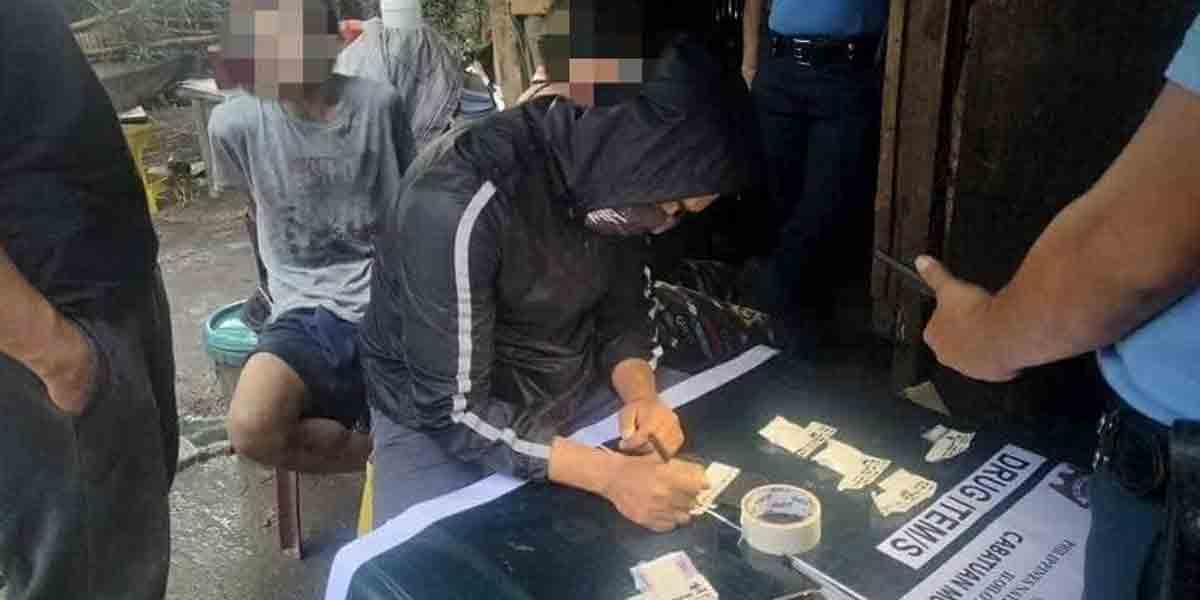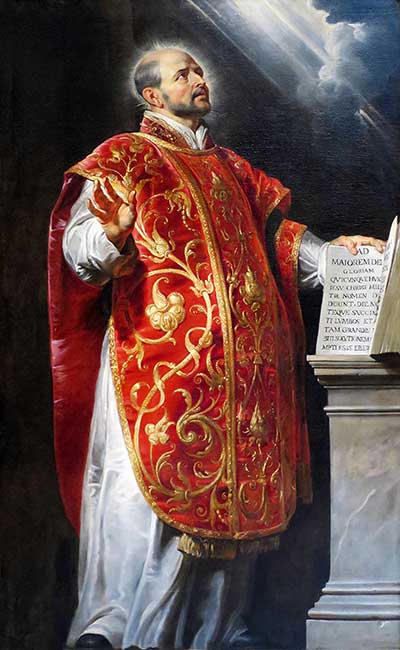By John Anthony S. Estolloso
ASK ANY student, faculty, or cleric from a Jesuit school about the life of Ignacio de Loyola and you will be regaled by the exploits of the saint: how he grew up in the opulent comforts of Spanish royalty, how a cannonball smashed one of his legs in the futile defense of Pamplona in 1521, how he found God and himself during his recuperation thus prompting him to reform his life, and how he founded a religious order that would become a most influential pedagogical force through the centuries.
Such fame and admiration do not pass unnoticed: the sundry iconography of the saint through history corroborates this.
An early ‘true copy’ of Ignacio de Loyola depicts him as a knight clad in black armor with a lance resting on his left shoulder. Painted contemporaneously by an anonymous artist during the 16th century, the icon juxtaposes both secular and religious imagery: though he is in full armor, Ignacio has the Christogram painted on his breastplate even as his hair is cropped short, something very unmilitary during his time. At the right background is the coat of arms of Loyola (still used by many Jesuit schools): an impaled shield with the scarlet and gold bars of Spain on right and the family’s sigil – lobos y ola, wolves and pot – at left, the symbol of the family’s renowned generosity.
More familiar to many would be the portraits of the saint by Flemish painter Peter Paul Rubens. Educated by the Jesuits, Rubens paid homage to the founder of the religious group by rendering several artworks of him. His 1612 portrait depicts Ignacio as a priest clad in a red chasuble, embroidered by gold brocade. As Catholic liturgical symbolism would identify the color with the intense love for the Divine, this is visually augmented by the uplifted face of Ignacio, drawn ecstatically towards what seems to be light of divinity. His left hand rests upon a volume of the Jesuit Constitutions, opened at the page on which the motto of the Society of Jesus is inscribed: ad majorem Dei gloriam – for the greater glory of God.
In stark contrast to Rubens’s brilliant colors, an earlier 1600 portrait attributed to Spanish painter Francisco de Zurbarán (or probably one of his students) presents a much gloomier interpretation of the saint. Reversing the chiaroscuro by coalescing the duskier shades in the saint’s cassock, he projects Ignacio the ascetic, worn out by self-mortification and his efforts in establishing the Society of Jesus. The face, crowned by a thin halo, is gaunt and barbate; the hands, in a gesture of futile surrender, seem to visualize the words of Ignacio’s Suscipe: ‘Take, Lord, and receive my memory, understanding, and will…’
Ignacio de Loyola’s sword-offering to the Virgin Mary at the Benedictine abbey in Montserrat offers an interesting challenge to many artists. For one, the theme is subject to the painter’s interpretation: in Ignacio’s solitude, no one knew exactly how he looked like in the reverie of his oblation. Take for instance, Ed Defensor and Harry Mark Gonzales’s monumental sculpture outside the main building of Ateneo de Iloilo. Rendered in cold-cast marble, the massive gold-tinted statuary captures that sublimely heroic moment: garbed in knightly cape and doublet with the red shield of Navarre on his surcoat, the saint genuflects and raises his sword in a gesture of submission. The figure wears his hair long, recalling at that moment that he was still a soldier of the world, inspired to take on a more spiritual quest.
Far be it for these portraits to mythologize one who preferred the humble sackcloth, slippers, and staff of a pilgrim, they nonetheless provide a glimpse of Ignacio’s spiritual journey, one that led a worldly character to more saintly pursuits.
* * * * *
Modern and contemporary depictions of Ignacio de Loyola continue to be produced: copies and prints of Albert Chevallier-Tayler’s biographical series are familiar fixtures in Jesuit institutions and digital renderings of the order’s founder portray him in various iterations, from the caricaturized to the abstract. Though a common feature seems to thread through these canvases: Ignacio’s eyes, world-weary and haunted yet piercingly ecstatic – as if still introspectively asking what he can do more ad majorem Dei gloriam.
[The writer is the subject area coordinator for Social Studies of the local Jesuit school. Images of the artworks are from Wikimedia Commons; the photo of the statue is from Hanz Sirilan.]

























